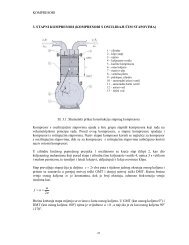universityâenterprise cooperation
universityâenterprise cooperation
universityâenterprise cooperation
You also want an ePaper? Increase the reach of your titles
YUMPU automatically turns print PDFs into web optimized ePapers that Google loves.
A corresponding questionnaires was circulated<br />
to the main innovation stakeholders in WBCs:<br />
• National structures supporting enterprise<br />
and innovation policies and programmes,<br />
(Ministries of Economy and/or Labour,<br />
Ministries of Science and Education);<br />
• Business and innovation support institutes<br />
(Agencies for business or SME development,<br />
Regional Development Agencies, Business<br />
Support Centres);<br />
• Research, technological development and<br />
innovation (RTDI) centres (Technology<br />
transfer centres, Technology parks);<br />
• Technology and business incubators;<br />
• Chamber of Commerce and Industry;<br />
• SME networks or clusters.<br />
The survey results, fully presented in report<br />
[37], shown that:<br />
• Collaboration and networking is the strongest<br />
innovation need, whereat exchange of<br />
experience and know-how is the main, followed<br />
by networking for innovation promotion;<br />
• Technology transfer, training and human<br />
resources development are the main<br />
innovation support needs;<br />
• Financial support needs are mainly towards<br />
the creation and development of innovative<br />
start-ups;<br />
• There is particular interest for innovation<br />
networks, joint innovation activities and<br />
mobility;<br />
• The types of collaboration of most interest<br />
are transnational collaboration, interregional,<br />
regional and science-industry collaboration.<br />
61<br />
Current state in the WBC region 4
















